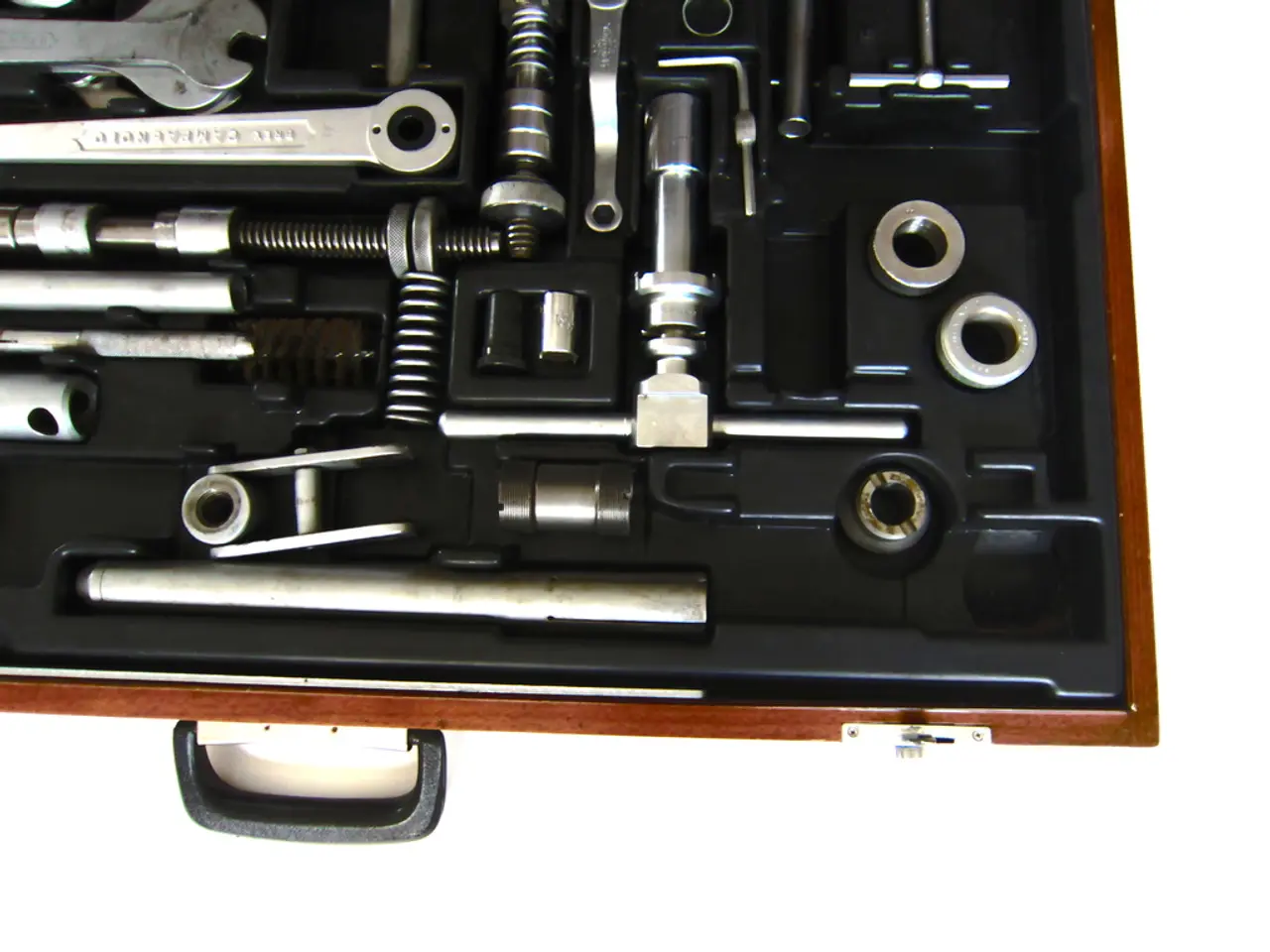Guide on Implementing Drones for Political Campaign Promotions
In the modern world of politics, innovation is key to capturing the attention of voters. One such innovation is the use of drones in political campaigns. These unmanned aerial vehicles offer a unique blend of eco-friendliness and technological prowess, making them an attractive tool for advertising and information dissemination.
Drones can project campaign videos, animated logos, personalized messages, or short speeches on buildings, screens, or temporary structures. They can also live-stream rallies, record aerial views, drop promotional materials, or fly with digital banners to grab crowd attention at political gatherings. This multimedia capability provides high visibility and viral video potential, making campaigns more engaging and memorable.
The novelty and tech appeal of drones can attract younger demographics, especially when combined with social media amplification. However, their use is not without its challenges. Regulatory restrictions limit drone flights beyond the visual line of sight, and privacy concerns arise from intrusive surveillance. Potential security risks, especially with drones manufactured abroad, and public unease or opposition to drone use due to these issues also need to be carefully managed.
The regulatory environment is evolving, with legislation aiming to ease restrictions like beyond visual line of sight operations using AI-assisted waivers. This could enhance campaign drone usability in the future but also requires addressing associated privacy and security concerns.
To effectively employ drones in political campaigns, high-quality drones with payload capacity, projection equipment, stable flight systems, GPS mapping, and experienced drone pilots are essential. In areas where ground outreach is difficult, drone leaflet drops are still a useful method to distribute campaign literature at scale. Drones can also be programmed to target specific constituencies or villages, delivering customized messages or banners tailored to hyperlocal issues.
Collaborating with licensed drone service providers ensures safety, compliance, and creative execution of aerial strategies. Drones are especially effective in rural areas for leaflet distribution, localized video projection, and generating excitement where traditional media is less accessible.
However, it's important to note that drones cannot replace traditional campaigning methods but can significantly enhance visibility, supplement rallies, and offer creative alternatives where traditional media is saturated. Drone light shows can be programmed to display party symbols, slogans, or visuals in the sky, creating a spectacular and memorable visual narrative.
In India, drone advertising in political campaigns is legal, but it requires compliance with DGCA (Directorate General of Civil Aviation) regulations, including permissions, no-fly zones, and registration. Risks associated with drone advertising include weather issues, airspace violations, technical malfunctions, public safety hazards, and non-compliance with aviation rules. Night operations with drones need special approvals from authorities and should follow safety protocols including anti-collision lights and visibility planning.
In conclusion, drones offer innovative advertising advantages in political campaigns by enhancing message delivery and engagement through aerial and multimedia capabilities. However, their use is presently constrained by legal, ethical, and security considerations that campaigns must carefully manage. With the right approach and careful compliance with regulations, drones can become a powerful tool in the political advertising arsenal.
- Politicians are increasingly using drones as part of their political marketing strategies, capitalizing on their multimedia capabilities and viral video potential.
- The use of drones for political advertising is not without challenges; regulatory restrictions, privacy concerns, and potential security risks warrant careful management.
- To leverage drones effectively in political marketing, utilizing professional drone service providers for safety, compliance, and creative execution is crucial.
- Social media platforms can amplify the reach of drone-projected advertisements, particularly appealing to younger demographics.
- In some regions where traditional media accessibility is limited, drones can serve as a valuable resource for distributing campaign literature and customized messages, making politics more accessible to the general-news audience.




